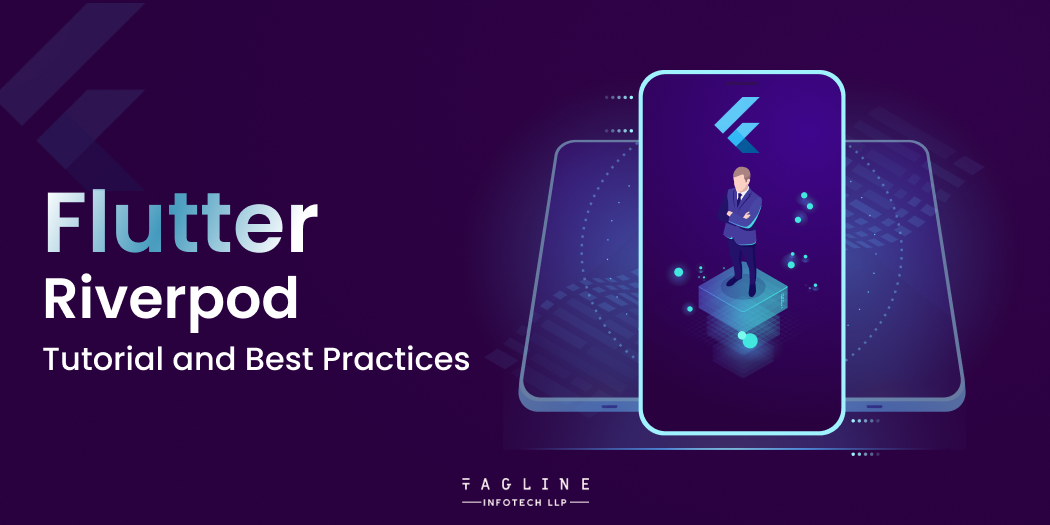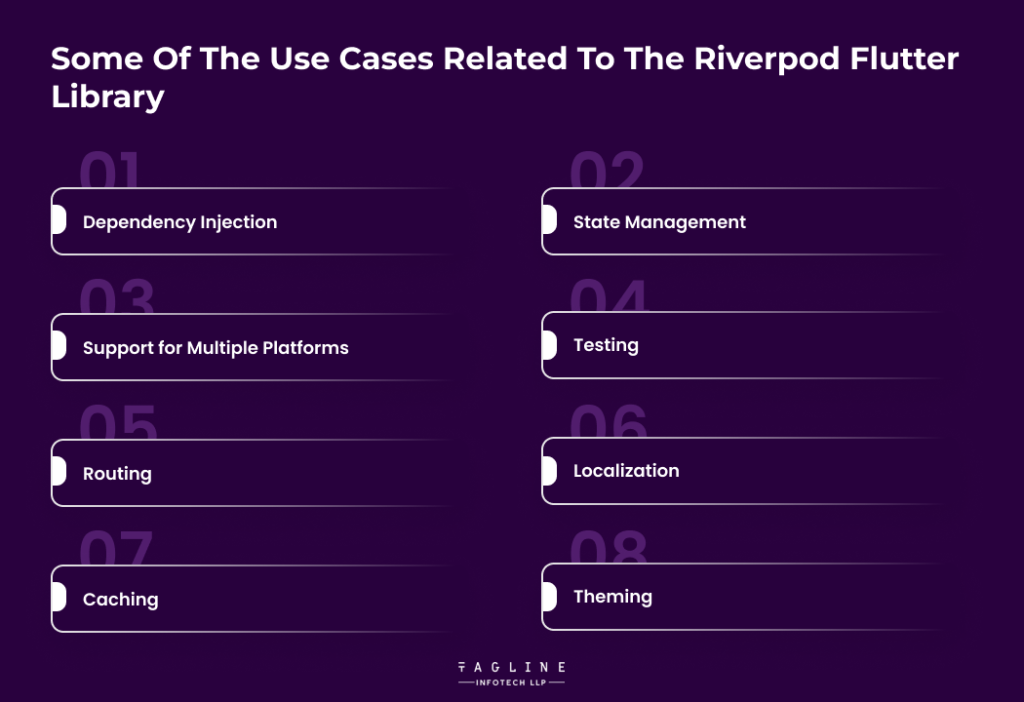What is Scalability in Cloud Computing? Types, Benefits,...
April 24, 2024
Home >> Flutter >> Flutter Riverpod: Tutorial and Best Practices

Quick Summary
The Flutter framework includes a state management library called Flutter Riverpod. Its goal is to make application state management and sharing more straightforward, accessible, and efficient. In other words, you can share app states with many classes because Google’s Flutter can handle its state independently. This is a significant benefit. Although a library pool is already available to developers through Flutter app development services, this article will shed some light on Riverpod. Let’s start by getting a general understanding of the Flutter Riverpod concept before diving into the tutorial.
For Flutter app development companies, there is a state management library called Riverpod that helps you manage your application’s state in an easy-to-use, reliable, and scalable way. The same team that created the popular Flutter state management library, Provider, constructed this.
You need to add the dependency to your pubspec.yaml file before you can use Riverpod in your Flutter application. By doing this, you can be sure that the Riverpod dependence is the most recent version. You can achieve this by adding the following line under the “dependencies” section:
Dependencies : riverport: ^1.0.4
Flutter pub get
This will download and install the Riverpod library and its dependencies in your Flutter application.
Add “flutter_riverpod/flutter_riverpod.dart” as a package name to the import.
You must construct a Provider so that you can access and utilize your application throughout the development of your project. A value is a provider. You can generate a Provider using the StateProvider or Provider classes in the Riverpod library.
The following is an example of how to create a Provider that can store a counter value:
The final counterprovider is a provider with an integer value of zero. In this instance, CounterProvider is a Provider.
Once you’ve developed a Provider, you may integrate it into your Flutter widgets. It would help if you used the Consumer widget in the Riverpod library to operate a Provider.
To change a provider’s value, you should utilize the ref argument found in the Provider’s constructor method to shift a Provider’s value. For this example, the counter-provider is a state provider with a variable value—the context. The read () function updates the Provider’s value when the user clicks the Increment button.
This is the last of it! When you do this, your Flutter application will be integrated with the Riverpod Flutter library, and a Provider will be created to help you keep your application up to date.

You can easily handle dependencies in your Flutter application with Flutter GetX State Manager or Riverpod’s integrated dependency injection capability. Reducing the number of connections between your application’s components and improving the modularity and testability of your code can both be accomplished by using dependency injection.
This makes it simple to add instances of widgets, objects, or other providers to other sections of your program. You can establish providers in Riverpod that hold instances of these kinds of providers. One possible approach would be to develop a provider with an example of an API client and then incorporate it into a widget requiring API queries. This would fulfil the widget’s requirements.
Furthermore, Riverpod gives you resources to help you handle challenging conditions. StateBuilders and StateNotifiers are two of these tools. Classes called StateNotifiers are in charge of keeping track of your application’s current state, and you can change it by using the state API. StateBuilder widgets can self-rebuild on their own whenever a provider’s state changes.
Riverpod is designed to work with desktop, mobile, and online Flutter platforms, among others. Using it, providers can be created that work on several platforms and share code between them.
For example, you could create a service that saves the state of your application and then use it in your online and mobile applications. This reduces redundancy and also makes codebase maintenance easier.
Riverpod makes it easier and more efficient to test your Flutter application. If you utilize providers to handle dependencies and states from the start, you can easily replace or fake them in your tests.
Using the overrideWithProvider function, you can substitute a false provider for a real one while running tests with Riverpod. This ensures that your tests will be dependable and consistent and makes it easy to isolate particular sections of your application for testing.
One platform you may use to control routing and navigation in your Flutter application is called Riverpod. You can utilize the Provider you made to modify the user interface (UI) when the user navigates to a different screen. If you construct a screen or route, this Provider will hold it.
For example, you could create a service that keeps track of the route currently being taken. When the user takes a different route, you could utilize that service to show the appropriate interface.
When working with your Flutter application, you may use Riverpod to manage localization and internationalization. You can create a service that keeps track of the user’s current locale and uses it to change the UI to match the language the user chooses to use.
One way to do this is to create a source that saves the current locale and uses it to show text and appropriate translations for that context.
You may use Riverpod to control your Flutter application’s offline data storage and caching. When the user is not connected to the internet or when the data loads slowly, you can set up a provider that keeps cached data and presents it to them.
One possible solution would be to set up a cache provider and use it to show users’ cached images when they are waiting a long time to load or are not connected to the internet.
Templating Riverpod is in charge of your Flutter application’s theming and styling. You can construct a provider that saves the current theme and then uses it to modify the user interface based on the user’s preferences.
For example, one could create a service that tracks the theme currently in use and then utilize that service to provide the appropriate colours and styles for that theme.
In terms of addressing problems related to Flutter state management, Riverpod is a logical approach that is undoubtedly better than Provider in the same manner. By implementing this, you can give your Flutter application a strong architecture, which is a big improvement over the Pder’s drawbacks. For the best results, consider hiring Flutter developers skilled in Riverpod to enhance your application’s performance and maintainability.
In terms of Flutter, Flutter Riverpod provides good dependency injection and state management.

Digital Valley, 423, Apple Square, beside Lajamni Chowk, Mota Varachha, Surat, Gujarat 394101
+91 9913 808 2851133 Sampley Ln Leander, Texas, 78641
52 Godalming Avenue, wallington, London - SM6 8NW